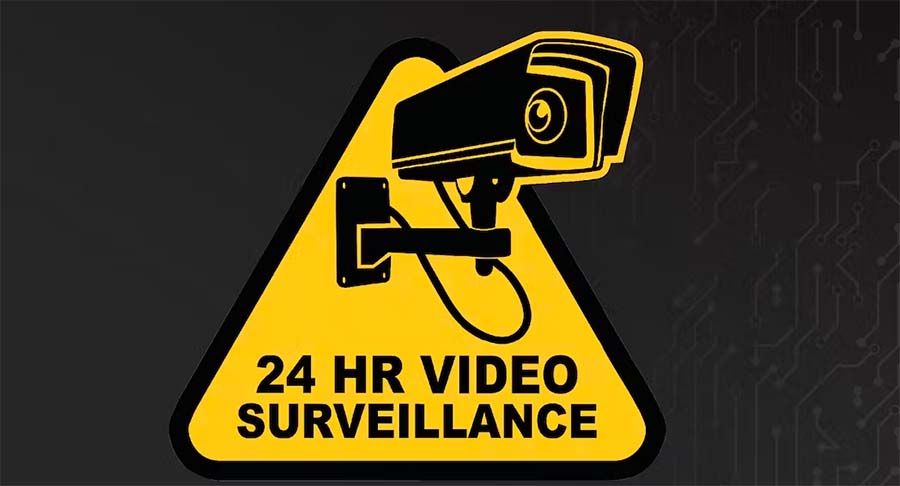While technology is making it easier to track inventory levels and to catch the occasional chronic thief, experts say the formula for success involves deterrence, inventory control, design and communication.
Reprinted from Vending Market Watch
Micro market theft has been an issue for operators since the first market went live around 2009, but the sudden surge many operators reported in Q1 of this year remains largely unexplained. Could it be attributed to a post-holiday financial hangover? Resentment about returning to the office after January 1? A response to painful inflation rates? Whatever the reason, thankfully, the problem has apparently subsided for the moment, but the experience served as a strong reminder that operators must remain diligent about micro market security and theft mitigation strategies.
A retail problem
Like many operators, Tim McAra, senior vice president of Refreshment Services Group at Continental Services in Troy, Michigan, was surprised to see the sudden surge in theft. In the June 13th Automatic Merchandiser and VendingMarketWatch.com webinar, State of the Vending Micro Market Industry Report, McAra said that theft hit his company hard in January of this year. “I think it was a retail problem because retail stores were also reporting a big spike in theft, and it seemed to just carry into our business.”
McAra said that theft almost doubled on them overnight. “We had to get really vigilant. We have loss prevention help, we have cameras, we have all these things that we do, but it got away from us for a minute, and it reminded us that we have to stay on top of these things. It’s a lever that makes a market profitable, and if you take your eye off it, it can get away from you,” he added.
Moderate theft in 2022
Data compiled from the 2022 Automatic Merchandiser State of the Industry report indicates that micro market theft was moderate in 2022 and that operators are relying on several methods to control losses from theft, commonly referred to in retail as shrink or shrinkage.
According to the report, most operators believe their shrink rate is in the 3% to 5% range. Screens showing cancelled orders are the most popular theft deterrent and for good reason. Operators and industry consultants agree that transaction cancellation is the most common micro market theft technique. The end user selects a product, walks up to a kiosk, goes through the motions of a transaction, and then cancels the transaction and walks away with the product without making a payment.
Regular market inventory, signage designed to deter theft and reliance upon camera systems are also commonly used to mitigate theft. Fortunately for operators, technology is lending a helping hand, as companies like Panoptyc, Cantaloupe and Nayax offer products designed to act as a strong deterrent and can lower micro market shrink rates.
An AI solution
Bridger Keally, sales director at Panoptyc, was well aware of the spike in theft during Q1 of 2023. He heard about it from clients. “Unfortunately, the shrink rate has gone up significantly this year. We have seen situations where the loss level has been at 25%, 30% or even 50%. At that point, the operator is about ready to just pull the market,” said Keally.
Panoptyc provides a video security system for micro market operators that uses AI to identify anomalies in customer behavior – red flags that are indicative of possible product theft. Company founder Mac Bolak offered some examples of red flags that are picked up by the Panoptyc system.
- When someone walks through the micro market without buying anything.
- When someone walks into the market, picks up a product and does not make a purchase.
- A wide variety of “funny business” that happens near the kiosk.
Most importantly, once the anomalies are identified, Panoptyc provides an analysis of the video and a report for the operator to understand exactly what is happening at the location, including actual evidence of theft. That evidence is important when an operator wants to discuss the matter with their client.
A technological approach
Tony Danna, VP and general manager of the Three Square Market division at Cantaloupe Inc., said that the ability for an operator to easily take an accurate inventory is critical. “With everything we offer between Three Square and Cantaloupe, the operator has the ability to do all of their inventory controls through a mobile app right on site,” Danna said. “Now you can get them to do a very strategic spot check routine, monitoring the theft and the spoilage in the markets on a consistent basis.”
Danna noted that when operators make the mistake of not doing inventory on a regular basis, that is when shrinkage gets out of control. He said the operators who have a huge issue are the ones who finally take inventory after a longer period of time and suddenly find that shrink is out of control.
At checkout time, Cantaloupe generates an Abandoned Shopping Cart Report. “What our system does is it takes a picture, timestamps it, puts it on the back-end, and then you can review all of those with people’s pictures and the products that were involved in cancelled transactions,” he said. “This report provides useful evidence when an operator needs to communicate with a client about shrinkage levels.”
Pete Carmain, vice president of national accounts at Nayax, said that operators need to focus on getting the most reliable back-end system as possible. Carmain points out that operator error can really distort shrink rates, but with products like Nayax’s MoMa 2.0 mobile app, operators can get off to a great start when they are picking and filling products. “Accurate data is our number-one focus,” he said.
The Nayax Nova Market offers a yellow screen, red screen deterrent system. “If you have a camera pointed at the market, one of the things that I think is really beneficial is when a transaction is completed and everything is on the up-and-up, so to speak, you’re going to get a yellow screen,” Carmain said. “When you see that yellow screen, you know that was a good transaction. If the transaction itself is cancelled, you’re going to get a red screen. So those can be looked at from the camera, and the operator can go back and look at all those red screens. Did the product walk out? Was the product put back?”
Carmain continued, “It seems almost too simplistic, but really, if you have to go back and look through all of this video, you could be looking at hours and hours of videos trying to find one or two instances. “Now, you’re just looking at a basic color scheme.”
Design, traffic flow and shrinkage
Steve Orlando, an experienced operator of 10 years who co-founded Fixturelite, a leading supplier of micro market retail displays, equipment and design tools, believes that there is a direct correlation between a well-designed, well-stocked micro market with smooth traffic flow and a lower level of shrinkage. He said an obvious investment by the operator and the location is appreciated by employees. “They want to keep it. They want it to work well because it’s a benefit to everybody,” Orlando said. “If it’s well-designed and well-merchandised and always looks freshly stocked, there’s a perception that someone’s keeping an eye on that market, whether it’s your fellow employees or via the security cameras that are being monitored.”
Orlando said that traffic flow also has an impact on shrink levels, noting that loss prevention specialists will tell you that congestion at the checkout leads to theft. “Additionally, people are in a hurry. Break times are only so long, lunch breaks are only so long, and if the market isn’t designed well to allow for optimized traffic flow, people are going to get impatient. Perhaps they’ll take something and then intend to come back later and pay for it – but people forget,” Orlando said.
Technology, pricing and communication
Steve Closser of Translucent, LLC, a leading micro market consultant, said operators need to do two things to address theft in micro markets, in addition to using technology like LightSpeed that will allow for accurate product picking and inventory. “Use the tools that are available, and if you are picking your orders and sending them out properly, you will find that your shrink level will be reduced.”
Closser said that operators need to focus on communication with customers. “Don’t make a big deal about it, but just let the client know there is a theft problem. Ask the question, ‘What can we do about it? Ask cooperatively, not in an adversarial way,” he said. Closser also urges operators to price their products appropriately, building in the cost of shrinkage, rather than spending your time chasing the two percent of dishonest people out there. “Focus on serving the other 98% and make a ton of money,” he said.
Client communication was cited as a critically important strategy by every industry expert, including Panoptyc’s Keally. “With our operators, we stress the importance of having conversations with their customers upfront about how shortages will be dealt with,” Keally said. “It is important to manage the relationship by getting ahead of the problem – having a discussion about the fact that theft is inherent in a micro market and having a plan of action in place that everyone is comfortable with.”






